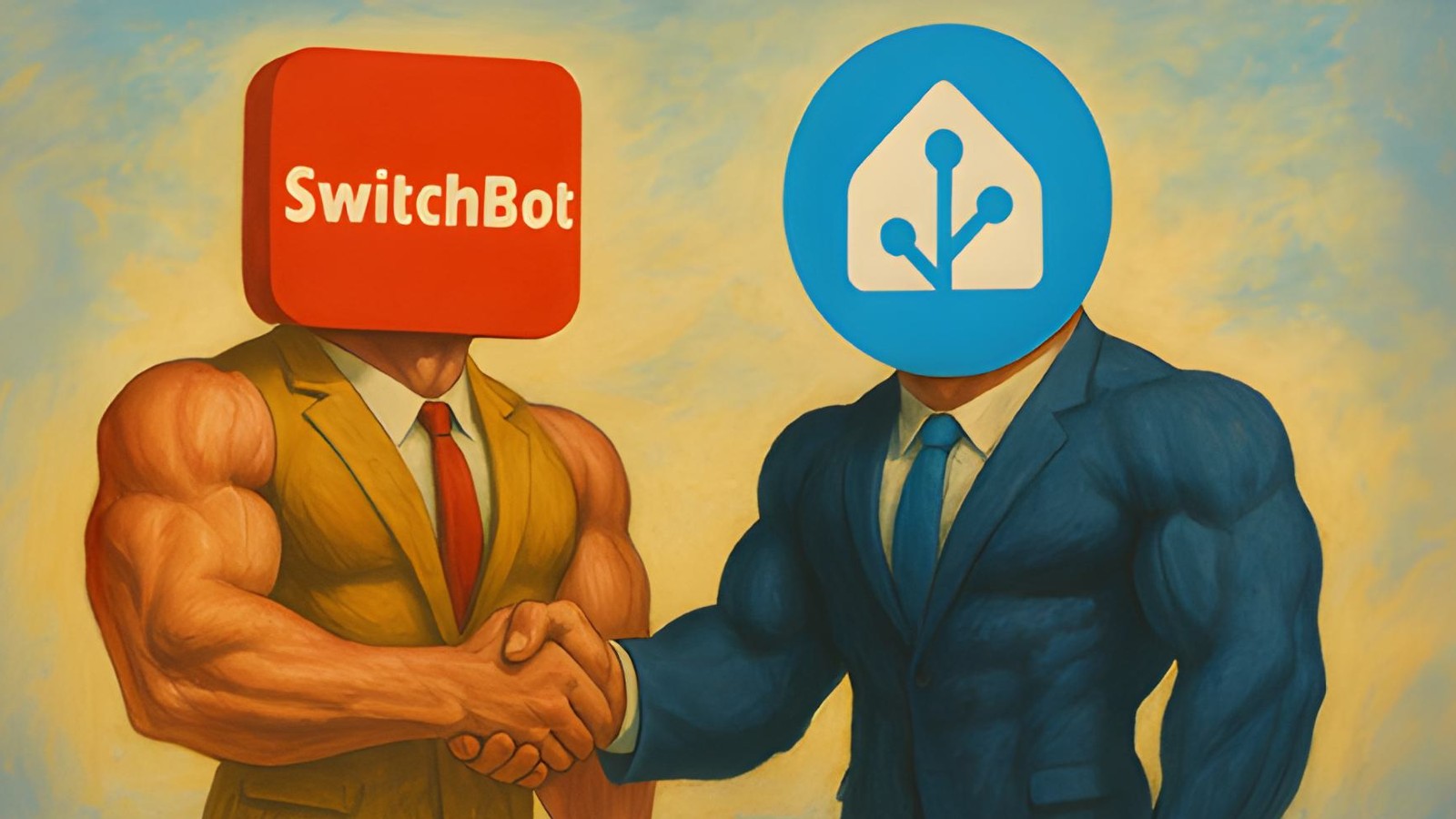Home Assistant is currently the most mainstream open source smart home hub system.Xiaomi launches Home Assistant official integrationLater, on March 21, 2025, SwitchBot also officially announced that it would integrate more than 45 of its smart home products into Home Assistant in three different ways, providing users with a more unified and flexible control experience.
Table of contents
More than 100 products, three integration methods
As a leading brand in the smart home device market, SwitchBot not only produces classic switch robots, but also develops smart curtains, door locks, sweeping robots, and many other fields. Home Assistant is an open source smart home hub system known for its flexibility and customization. according to The latest announcement from SwitchBot official websiteThe integration plan will be rolled out in phases starting in April 2025 and is expected to be completed in the first half of 2025.
The integration of SwitchBot and Home Assistant will cover more than 100 smart home products. Different products can be integrated into Home Assistant via Bluetooth, Matter or cloud according to their connection methods. The official website providesProduct/Integration Comparison TableFor users to search, the characteristics and advantages of the three integration methods are analyzed:
Bluetooth Integration

- Features: Through the Bluetooth protocol, Home Assistant can communicate directly with the SwitchBot device without the need for a cloud intermediary, thus achieving localized control.
- Advantages: Local control brings faster response time and improves data privacy protection, and can operate without relying on an Internet connection.
- Applicable scenarios: Suitable for users who already have Bluetooth devices at home and value security and low latency.
- Support equipment:Switch robot (Bot), curtain robot (Curtain), knob robot (Lock)... and other Bluetooth devices.
The Bluetooth connection range is limited and may be unstable when there are many devices.
Matter Integration

- Features: Based on the Matter smart home standard, device control is achieved through SwitchBot Hub 2 or Hub Mini Matter Enabled, and cross-platform operation is supported.
- Advantages: Local control brings faster response time and improves data privacy protection, and can operate without relying on an Internet connection.
- Applicable scenarios:Users who use Home Assistant as their main smart home system.
- Support equipment: Some Wi-Fi devices (such as SwitchBot S10, K10+ Pro Combo, Air Purifier) can support Matter without a Hub; other devices require a Matter-enabled Hub.
Cloud Integration

- Features: You need SwitchBot Hub and SwitchBot account to connect to Home Assistant through SwitchBot API.
- Advantages:Supports a wider range of device types and provides remote control function in SwitchBot APP, allowing users to manage home devices anytime and anywhere.
- Applicable scenarios: Suitable for users who need to control multiple devices (such as infrared home appliances) or want to operate remotely.
- Support equipment: Smart socket (Plug Mini), temperature and humidity sensor (Meter), switch robot (Bot), curtain robot (Curtain), as well as smart sweeper and floor cleaning robot...etc.
Sensors are integrated through the cloudUpdate every 10 seconds, which is too slow for practical application in smart homes. It is recommended to give priority to Matter or Bluetooth integration.
SwitchBot Cloud API A maximum of 10,000 requests are allowed per dayPlease evaluate the usage carefully. It is recommended to give priority to Matter or Bluetooth integration, which is not restricted by API.
Impact and benefits to users
The integration of SwitchBot and Home Assistant has many positive effects for users. First of all, SwitchBot embraces the open source Home Assistant, allowing smart home users to control cross-brand smart home devices through Home Assistant, eliminating the hassle of using multiple apps in the past and giving users more choices when purchasing devices.
In addition, this move reflects the trend of the smart home industry moving towards the open source community. Discussions on Reddit show that some users consider full Bluetooth integration more convenient than Matter support because Bluetooth Hubs (such as those using ESP32 chips) are low-cost and support more devices.
Third, this integration may strengthen the relationship between SwitchBot and users, especially those who are good at DIY and value privacy and customization. It could also set a precedent for other device developers, promoting a more interoperable smart home ecosystem.
Potential challenges
While many consumers are welcoming the news, there are some potential challenges. For example, a discussion on Reddit mentioned that the SwitchBot Hub 2 supports too few devices, which may make some users feel limited. Another issue is the stability of the Bluetooth connection. Past data shows that some SwitchBot devices may become unstable in Home Assistant (this may be related to the hardware configuration of Home Assistant), affecting the user experience.
In addition, there is a problem with the status accuracy of the infrared device. As the official explanation states, the infrared device displays the last command sent in Home Assistant, rather than instant status feedback (it is possible that the device did not receive the command after it was sent). We hope that SwitchBot will solve this problem in future updates to improve the overall user experience.
A new milestone in the smart home sector
The integration of SwitchBot and Home Assistant marks an important step in the smart home sector and is expected to provide users with more flexible and efficient control options starting in April 2025. This not only improves users' automation and customization capabilities, but also promotes further adoption of open source smart home platforms. In the future, it will be worth paying attention to the actual performance of this integration and whether it will stimulate other manufacturers to cooperate with Home Assistant. This is also a win-win situation for smart home users, device developers and smart home systems.
